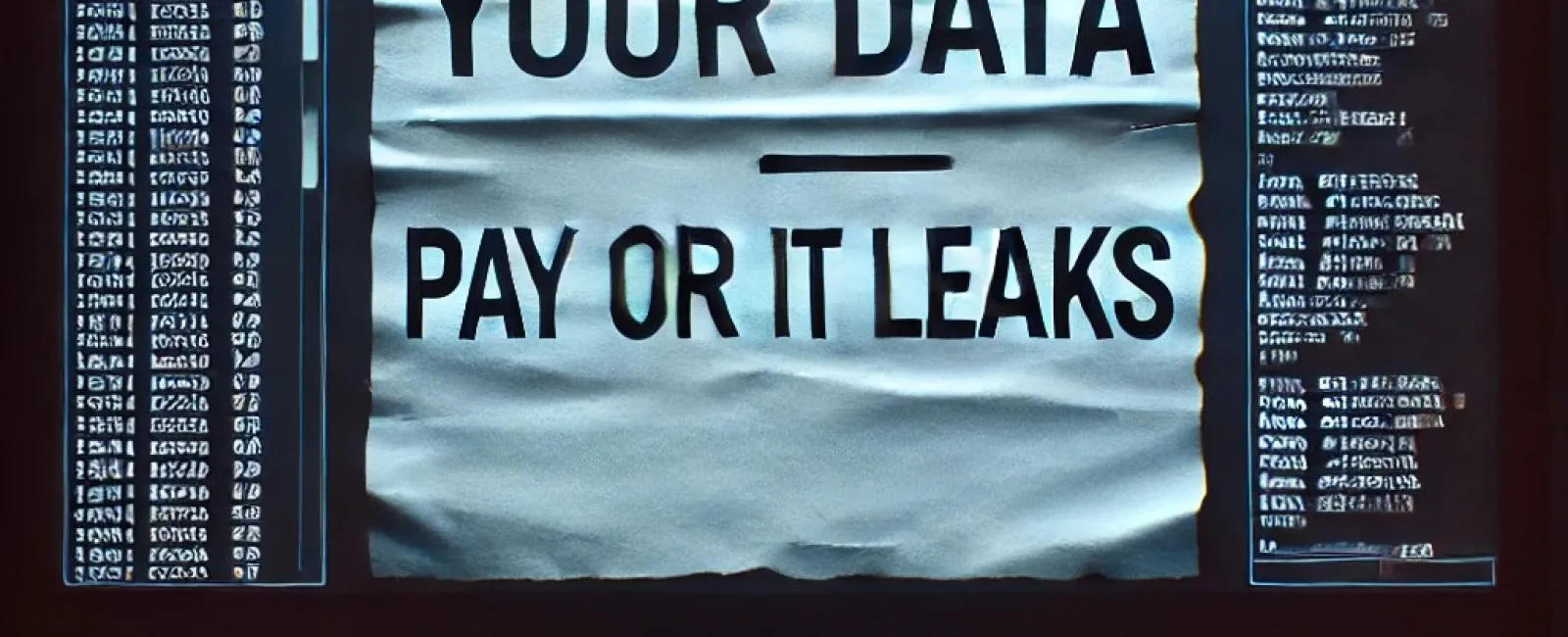April 21, 2025
Think ransomware is your biggest threat?
Think again.
Cybercriminals have unveiled a new, even more ruthless tactic to cripple your business — data extortion. This emerging threat is redefining the cybercrime landscape.
Instead of encrypting and locking away your files, hackers now steal your confidential data and blackmail you by threatening to expose it unless you pay a hefty ransom. There's no key to decrypt, no file recovery — just the terrifying risk of sensitive information flooding the dark web and triggering a public data breach.
The rise of data extortion is alarming. In 2024 alone, over 5,400 extortion-style cyberattacks were reported globally, marking an 11% increase over the previous year. (Cyberint)
This isn't just ransomware evolved — it's a game-changing digital hostage crisis.
The Surge of Data Extortion: Encryption Is No Longer Required
The era when ransomware locked your files is over. Cyber thieves now bypass encryption completely because data extortion is quicker, simpler, and far more lucrative.
Here's what happens:
● Data Theft: Hackers infiltrate your network covertly to steal valuable data — client info, employee records, financial statements, intellectual property, and more.
● Extortion Demands: Instead of encrypting files, they threaten to publicly release your stolen data unless you meet their demands.
● No Decryption Necessary: With no files encrypted, there's no decryption key involved, making these attacks harder to detect with traditional ransomware defenses.
And disturbingly, these criminals are often successful.
Why Data Extortion Poses Greater Risks Than Traditional Encryption-Based Ransomware
While ransomware primarily threatened operational downtime, data extortion raises the stakes much higher:
1. Brand Harm & Trust Erosion
Exposure of client or employee data doesn't just mean data loss — it shatters trust. The damage to your reputation can be instantaneous and long-lasting, often irreparable.
2. Regulatory Compliance Risks
A public data breach can lead to severe legal consequences, including hefty fines under GDPR, HIPAA, PCI DSS, and other regulations.
3. Legal Consequences
Victims may face lawsuits from clients, employees, or partners affected by the breach, with damages and legal fees that can threaten your business survival.
4. Perpetual Extortion Cycles
Data extortion doesn't end with a single payment. Cybercriminals can retain your data, re-extorting your business months or years later.
Why Hackers Are Moving Away From Encryption
In short: It's simpler and more profitable.
Ransomware attacks continue to rise — with 5,414 reported in 2024 worldwide, up 11% from last year (Cyberint) — but extortion offers significant advantages:
● Speed: Data theft is much faster than encryption, enabled by tools that quietly siphon information without triggering alerts.
● Stealth: Unlike ransomware that sets off antivirus and EDR systems, data exfiltration mimics normal network behavior, evading detection.
● Greater Pressure: Threatening public exposure of sensitive data creates emotional and business pressures, pushing victims toward payment.
Why Traditional Security Measures Fall Short
Classic ransomware defenses focus on preventing encryption, not theft — making them inadequate against data extortion. Relying only on firewalls, antivirus, or basic endpoint protection leaves critical vulnerabilities exposed.
Hackers are now:
● Deploying infostealers to harvest login details and breach systems.
● Exploiting cloud storage weaknesses to grab sensitive files.
● Masking data theft as routine network traffic, evading traditional security detection.
Plus, AI technologies accelerate and automate these attacks, making defenses even more challenging.
Effective Strategies to Shield Your Business from Data Extortion
The urgency to upgrade your cybersecurity strategy has never been clearer. Protect your business with these essential measures:
1. Adopt a Zero Trust Security Model
Treat every user and device as untrusted until verified. This ensures maximum protection.
- Implement rigorous Identity and Access Management (IAM).
- Enforce multifactor authentication (MFA) across all accounts.
- Continuously monitor and validate every device connecting to your network.
2. Leverage Advanced Threat Detection with Data Leak Prevention (DLP)
Basic antivirus is insufficient. Deploy AI-powered tools that can:
- Identify suspicious data transfers and unauthorized access attempts in real-time.
- Detect and block data exfiltration instantly.
- Monitor cloud platforms for irregular activity.
3. Encrypt Sensitive Data Both At Rest and In Transit
If stolen data is encrypted, it becomes worthless to cybercriminals.
- Apply end-to-end encryption for critical files.
- Ensure all communications use secure transfer protocols.
4. Maintain Regular Backups and Disaster Recovery Plans
Although backups won't stop theft, they allow rapid restoration after an attack.
- Keep offline backups to safeguard against ransomware and data loss.
- Test backups frequently to guarantee their effectiveness when needed.
5. Conduct Security Awareness Training for Employees
Your team is your first defense line. Train them to:
- Spot phishing attempts and social engineering attacks.
- Report all suspicious emails and unauthorized access requests.
- Strictly adhere to access and data sharing policies.
Are You Ready for the Future of Cyberattacks?
The threat of data extortion is here to stay and becoming more sophisticated. Hackers now have a powerful new way to coerce businesses, rendering old defenses ineffective.
Don't wait until your sensitive data is at risk.
Schedule your FREE Discovery Call today. Our cybersecurity specialists will assess your defenses, pinpoint vulnerabilities, and implement proactive protections to safeguard your critical information against data extortion.
Click here or call (802) 331-1900 to book your FREE Discovery Call now!
Cyber threats keep evolving. Isn't it time your cybersecurity strategy evolved too?





